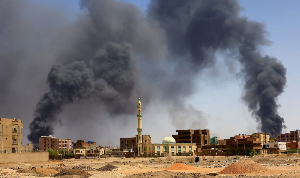Accra, Oct. 16, GNA - The National Platform for Disaster Reduction (DRR) and Climate Change Risk Reduction Management Committee (CCRM) was launched in Accra on Thursday.
The 50-member committee would ensure maximum reduction of disasters through policy formulation, education and consultation, and also coordinate the activities of community, districts, regional and national disaster management committees.
Mr. Yaw Oduro Amoako, Chairman of the Geological Sub-committee of the National Disaster Management Organisation (NADMO), speaking at the launching said earthquake, a forgotten occurrence in Ghana, could be devastating when it occurred because of its rarity but Weija and Nyanyanu were most susceptible areas.
"We should not be complacent about the long periods earthquake occurs in Ghana, especially when the Accra metropolis is earthquake prone. In 1615, 1636, 1862 and 1939 there were moments of grief when earth-tremor rocked some parts of the Gold Coast", he said. Mr. Amoako said in 1939, when the earth tremor occurred in Accra, 17 people died, 133 sustained injuries and Osu Castle, the seat of government had its roof ripped off.
He called on civil engineers to design buildings that would reduce the impact of earthquakes. Mr. Amoako said policy formulation by the committee would not be undertaken in isolation but grafted into the global, continental, national, urban, sub-urban and local perspectives to design a unified and coordinated technique to manage disasters. Dr. Cecilia Bentsi, Member of the committee, called on government to provide financial resources for the effective management of disasters. "Financial commitment is important for the committee to reduce the impact of disasters on the vulnerable and the cost of sustainable development," she said. Mr. Kofi Portuphy, National Coordinator of NADMO, said community consultation was critical to reduce disasters to the barest minimum. However, when it occurs the impact must be considerably reduced and managed.
Regional News of Friday, 16 October 2009
Source: GNA












